Fabrication and Characterization of a Flexible Fluxgate Sensor with Pad-Printed Solenoid Coils †
Abstract
:1. Introduction
2. Materials and Methods
2.1. Materials
2.2. Sensor Design and Fabrication
3. Characterization
3.1. Working Principle of the Sensor
3.2. Performance of the Sensor
3.3. Temperature of the Sensor
4. Conclusions and Discussion
Author Contributions
Funding
Acknowledgments
Conflicts of Interest
References
- Ripka, P. Advances in fluxgate sensors. Sens. Actuators A Phys. 2003, 106, 8–14. [Google Scholar] [CrossRef]
- Tumanski, S. Handbook of Magnetic Measurements; CRC Press: Boca Raton, FL, USA, 2016; pp. 179–189. [Google Scholar]
- Kubik, J.; Pavel, L.; Ripka, P. PCB racetrack fluxgate sensor with improved temperature stability. Sens. Actuators A Phys. 2006, 130, 184–188. [Google Scholar] [CrossRef]
- Kejı́k, P.; Chiesi, L.; Janossy, B.; Popovic, R.S. A new compact 2D planar fluxgate sensor with amorphous metal core. Sens. Actuators A Phys. 2000, 81, 180–183. [Google Scholar] [CrossRef]
- Dezuari, O.; Belloy, E.; Gilbert, S.; Gijs, M. Printed circuit board integrated fluxgate sensor. Sens. Actuators A Phys. 2000, 81, 200–203. [Google Scholar] [CrossRef] [Green Version]
- Hsieh, P.-H.; Chen, S.-J. Multilayered vectorial fluxgate magnetometer based on PCB technology and dispensing process. Meas. Sci. Technol. 2019, 30, 125101. [Google Scholar] [CrossRef]
- Tipek, A.; O’Donnell, T.; Ripka, P.; Kubik, J. Excitation and temperature stability of PCB fluxgate sensor. IEEE Sens. J. 2005, 5, 1264–1269. [Google Scholar] [CrossRef] [Green Version]
- Navaei, N.; Roshanghias, A.; Lenzhofer, M.; Ortner, M. Analysis of Single- and Double Core Planar Fluxgate Structures. Proceedings 2018, 2, 831. [Google Scholar] [CrossRef] [Green Version]
- Liu, Y.; Yang, Z.; Wang, T.; Sun, X.-C.; Lei, C.; Zhou, Y. Improved performance of the micro planar double-axis fluxgate sensors with different magnetic core materials and structures. Microsyst. Technol. 2015, 22, 2341–2347. [Google Scholar] [CrossRef]
- Heimfarth, T.; Mielli, M.Z.; Carreño, M.N.P.; Mulato, M. Miniature Planar Fluxgate Magnetic Sensors Using a Single Layer of Coils. IEEE Sens. J. 2015, 15, 2365–2369. [Google Scholar] [CrossRef]
- Liakopoulos, T.M.; Ahn, C.H. A micro-fluxgate magnetic sensor using micromachined planar solenoid coils. Sens. Actuators A Phys. 1999, 77, 66–72. [Google Scholar] [CrossRef]
- Chiesi, L.; Kejik, P.; Janossy, B.; Popovic, R. CMOS planar 2D micro-fluxgate sensor. Sens. Actuators A Phys. 2000, 82, 174–180. [Google Scholar] [CrossRef]
- Kawahito, S.; Satoh, H.; Sutoh, M.; Todokoro, Y. High-resolution micro-fluxgate sensing elements using closely coupled coil structures. Sens. Actuators A Phys. 1996, 54, 612–617. [Google Scholar] [CrossRef]
- Krebs, F.C. Fabrication and processing of polymer solar cells: A review of printing and coating techniques. Sol. Energy Mater. Sol. Cells 2009, 93, 394–412. [Google Scholar] [CrossRef]
- Huang, Q.; Zhu, Y. Printing Conductive Nanomaterials for Flexible and Stretchable Electronics: A Review of Materials, Processes, and Applications. Adv. Mater. Technol. 2019, 4, 1800546. [Google Scholar] [CrossRef]
- Tan, H.W.; Tran, T.; Chua, C.K. A review of printed passive electronic components through fully additive manufacturing methods. Virtual Phys. Prototyp. 2016, 11, 271–288. [Google Scholar] [CrossRef]
- Khan, S.; Lorenzelli, L.; Dahiya, R. Technologies for Printing Sensors and Electronics Over Large Flexible Substrates: A Review. IEEE Sens. J. 2014, 15, 3164–3185. [Google Scholar] [CrossRef]
- Ferrari, M.; Demori, M.; Baù, M.; Ferrari, V. Distance-Independent Contactless Interrogation of Quartz Resonator Sensor with Printed-on-Crystal Coil. In AISEM Annual Conference on Sensors and Microsystems; Springer: Cham, Switzerland, 2019; pp. 293–299. [Google Scholar]
- Jordan, C.D.; Yee, C.; Watkins, R.D.; Scott, G.C.; Martin, A.J.; Zhang, X.; Wilson, M.W.; Hetts, S.W.; Throne, B.R.H.; Wadhwa, A.; et al. Wireless Resonant Circuits Printed Using Aerosol Jet Deposition for MRI Catheter Tracking. IEEE Trans. Biomed. Eng. 2020, 67, 876–882. [Google Scholar] [CrossRef]
- Harrey, P.; Ramsey, B.; Evans, P.; Harrison, D. Capacitive-type humidity sensors fabricated using the offset lithographic printing process. Sens. Actuators B Chem. 2002, 87, 226–232. [Google Scholar] [CrossRef]
- Lee, T.-M.; Hur, S.; Kim, J.-H.; Choi, H.-C. EL device pad-printed on a curved surface. J. Micromech. Microeng. 2009, 20, 15016. [Google Scholar] [CrossRef]
- Krebs, F.C. Pad printing as a film forming technique for polymer solar cells. Sol. Energy Mater. Sol. Cells 2009, 93, 484–490. [Google Scholar] [CrossRef]
- Mooring, L.; Karousos, N.G.; Livingstone, C.; Davis, J.; Wildgoose, G.; Wilkins, S.J.; Compton, R.G. Evaluation of a novel pad printing technique for the fabrication of disposable electrode assemblies. Sens. Actuators B Chem. 2005, 107, 491–496. [Google Scholar] [CrossRef]
- Li, B.; Kavaldzhiev, M.; Kosel, J. Flexible magnetoimpedance sensor. J. Magn. Magn. Mater. 2015, 378, 499–505. [Google Scholar] [CrossRef]
- Melzer, M.; Makarov, D.; Calvimontes, A.; Karnaushenko, D.; Baunack, S.; Kaltofen, R.; Mei, Y.; Schmidt, O.G. Stretchable Magnetoelectronics. Nano Lett. 2011, 11, 2522–2526. [Google Scholar] [CrossRef] [Green Version]
- Yamashita, T.; Zhang, Y.; Itoh, T.; Maeda, R. Development of thin film based flexible current clamp sensor using screen-printed coil. Microsyst. Technol. 2015, 22, 577–581. [Google Scholar] [CrossRef]
- Schoinas, S.; El Guamra, A.-M.; Moreillon, F.; Passeraub, P. A Flexible Pad-Printed Fluxgate Sensor. In Proceeding of the Eurosensors 2017, Paris, France, 3–6 September 2017. Proceedings 2017, 1, 615. [Google Scholar] [CrossRef] [Green Version]
- Korepanov, V.; Marusenkov, A. Flux-Gate Magnetometers Design Peculiarities. Surv. Geophys. 2012, 33, 1059–1079. [Google Scholar] [CrossRef] [Green Version]
- Lu, C.-C.; Huang, J.; Chiu, P.-K.; Chiu, S.-L.; Jeng, J.-T. High-Sensitivity Low-Noise Miniature Fluxgate Magnetometers Using a Flip Chip Conceptual Design. Sensors 2014, 14, 13815–13829. [Google Scholar] [CrossRef] [Green Version]
- Ye, W.; Zhu, W.; Zhang, L.; Fang, G. A Quantitative Model for the Sensitivity of Untuned Voltage Output Fluxgate Sensors. IEEE Sens. J. 2016, 16, 7876–7883. [Google Scholar] [CrossRef]
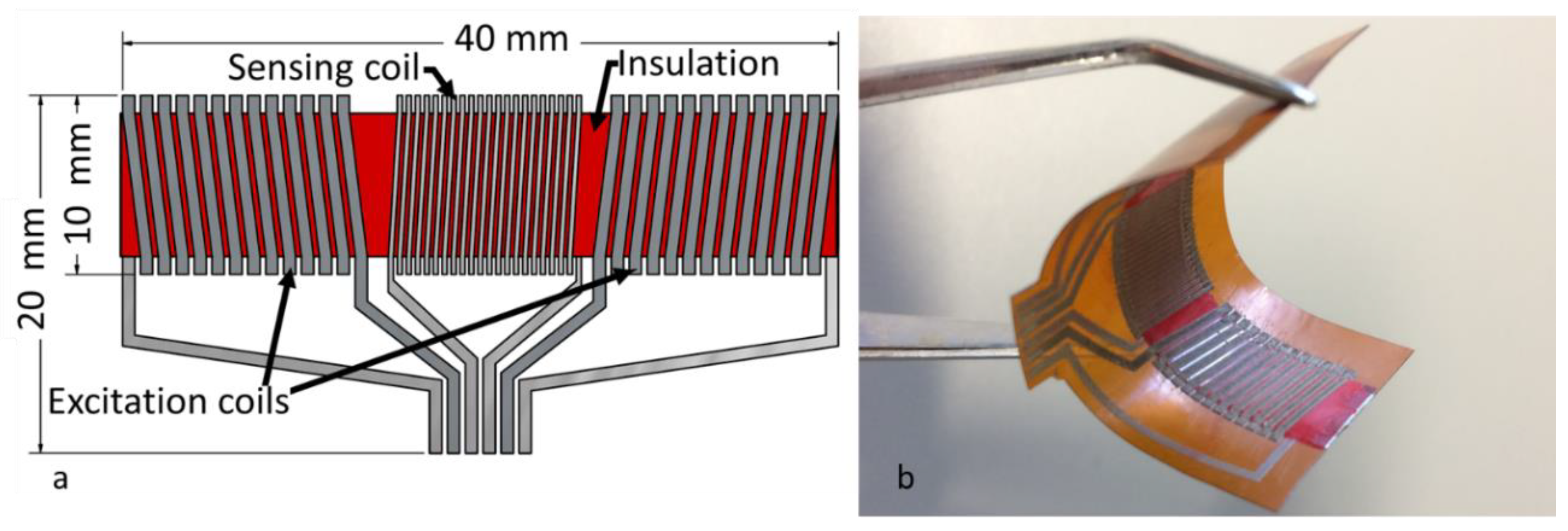
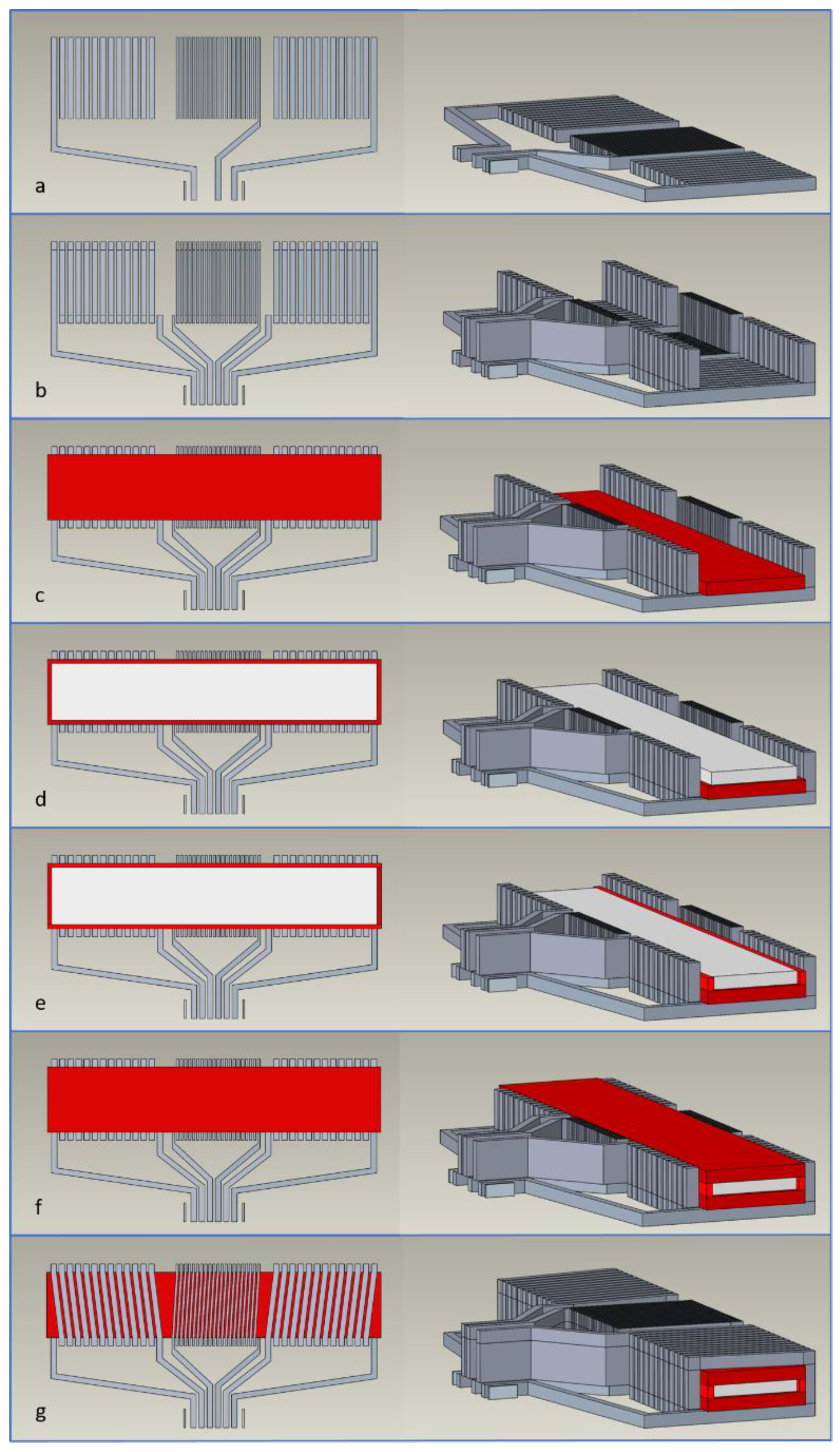

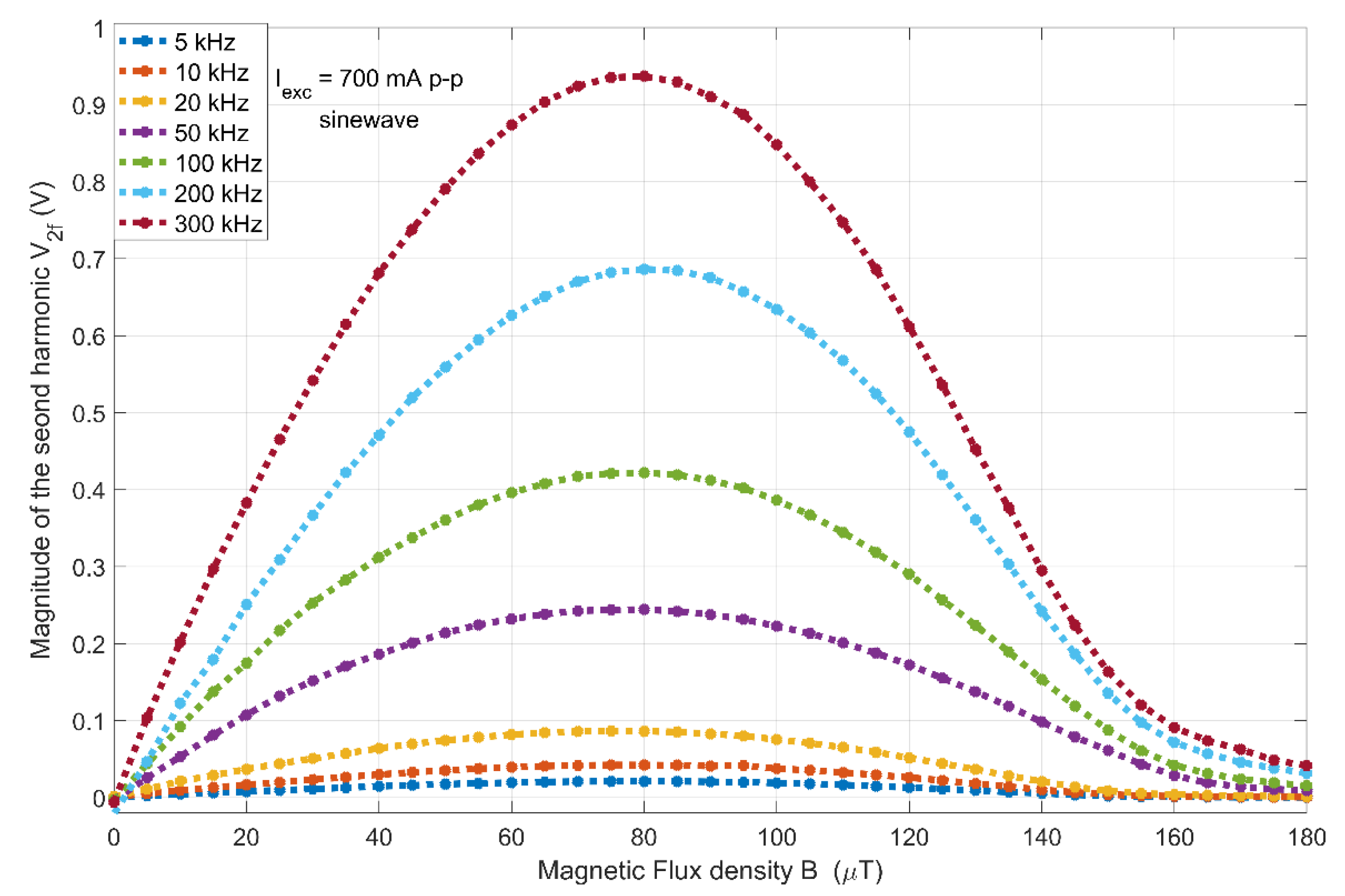
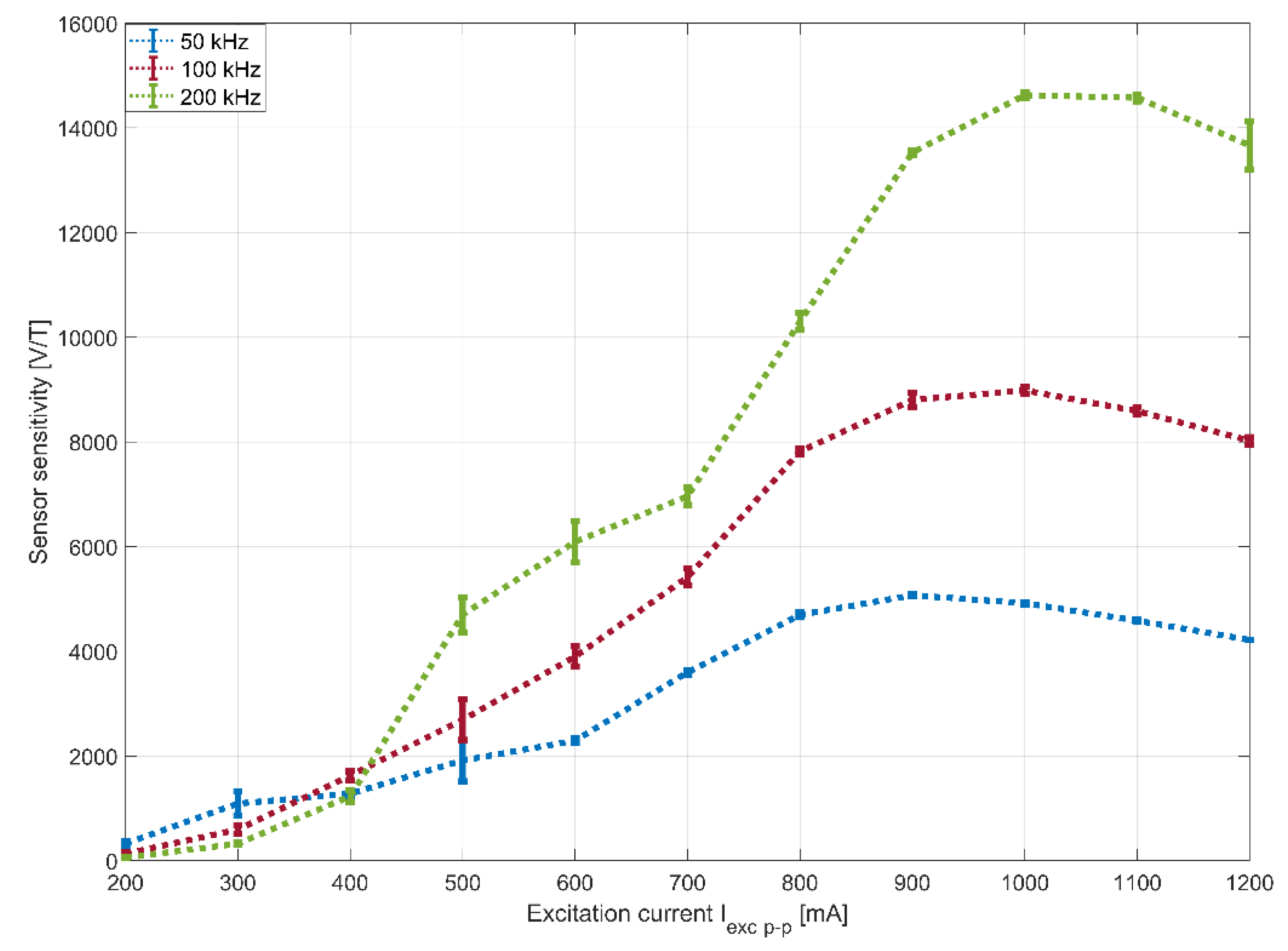
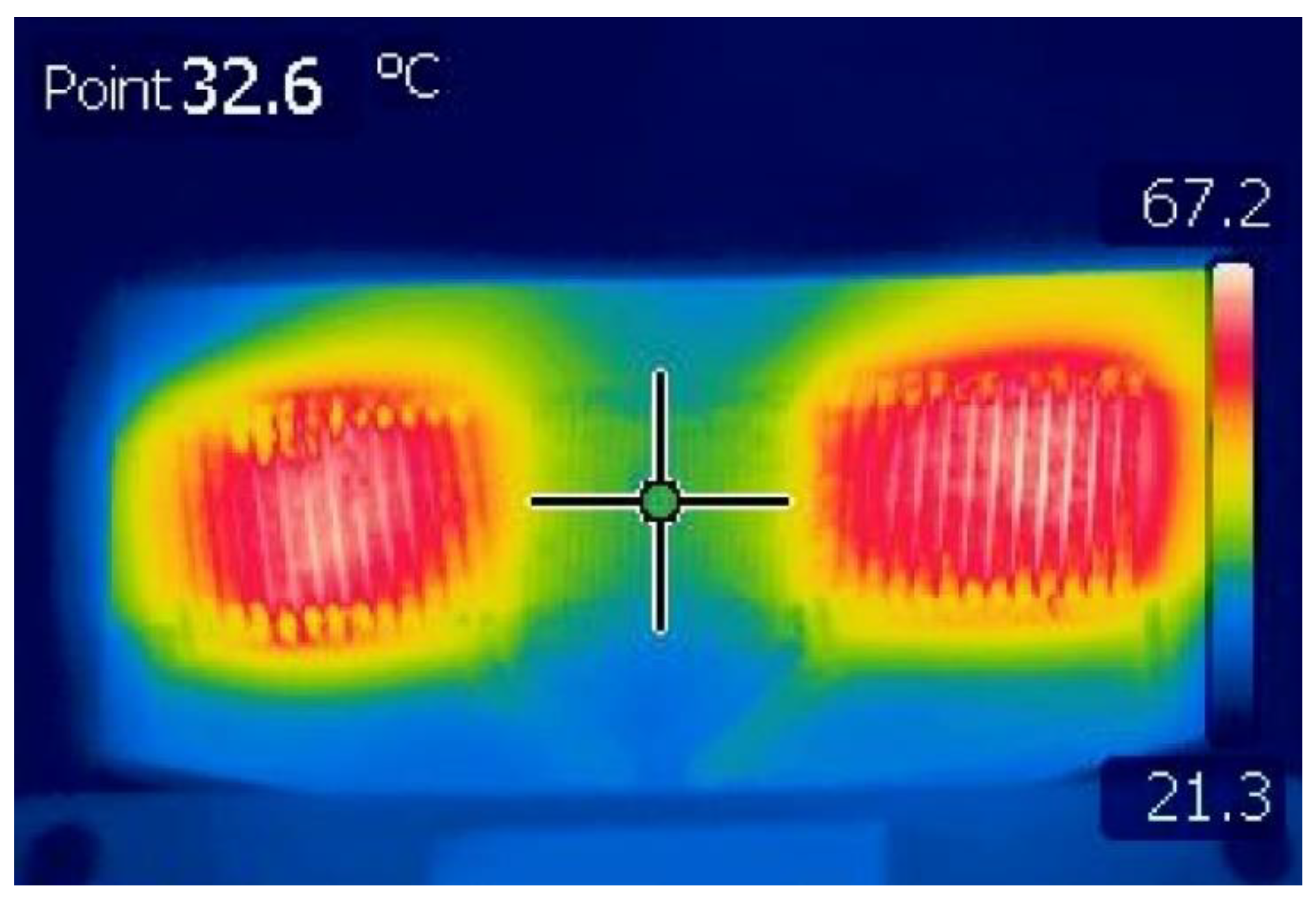


© 2020 by the authors. Licensee MDPI, Basel, Switzerland. This article is an open access article distributed under the terms and conditions of the Creative Commons Attribution (CC BY) license (http://creativecommons.org/licenses/by/4.0/).
Share and Cite
Schoinas, S.; El Guamra, A.-M.; Moreillon, F.; Passeraub, P. Fabrication and Characterization of a Flexible Fluxgate Sensor with Pad-Printed Solenoid Coils. Sensors 2020, 20, 2275. https://doi.org/10.3390/s20082275
Schoinas S, El Guamra A-M, Moreillon F, Passeraub P. Fabrication and Characterization of a Flexible Fluxgate Sensor with Pad-Printed Solenoid Coils. Sensors. 2020; 20(8):2275. https://doi.org/10.3390/s20082275
Chicago/Turabian StyleSchoinas, Spyridon, Adyl-Michaël El Guamra, Fabien Moreillon, and Philippe Passeraub. 2020. "Fabrication and Characterization of a Flexible Fluxgate Sensor with Pad-Printed Solenoid Coils" Sensors 20, no. 8: 2275. https://doi.org/10.3390/s20082275
APA StyleSchoinas, S., El Guamra, A.-M., Moreillon, F., & Passeraub, P. (2020). Fabrication and Characterization of a Flexible Fluxgate Sensor with Pad-Printed Solenoid Coils. Sensors, 20(8), 2275. https://doi.org/10.3390/s20082275




